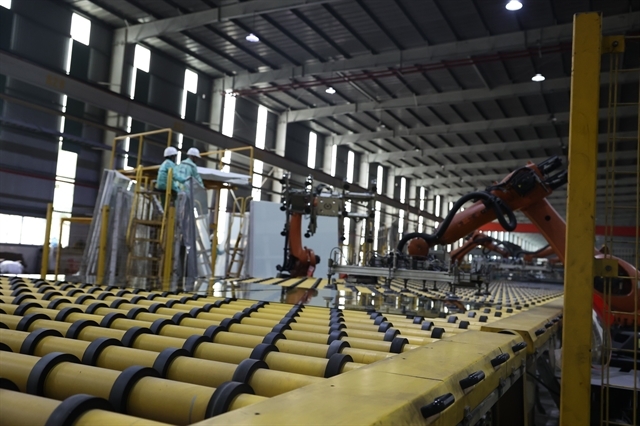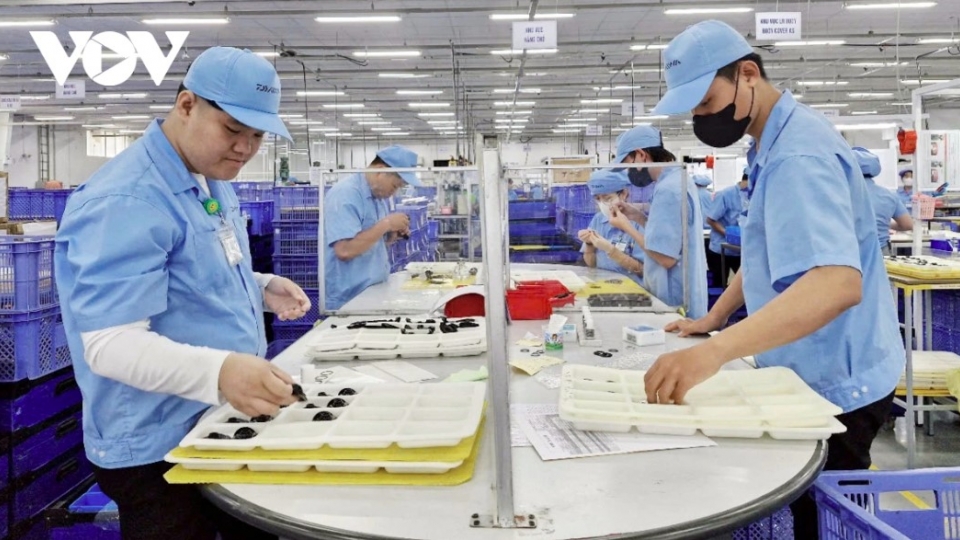Industrial production shows continued upward trend
Vietnam’s index of industrial production (IIP) maintained strong growth momentum, rising 8.8% year-on-year in the first five months of 2025, compared to a 7.1% increase during the same period last year, according to data from the Ministry of Finance's Statistics Office.

The manufacturing and processing sector - the main driver of overall industrial growth - expanded by 10.8%, contributing 8.8 percentage points to the IIP.
Electricity production and distribution rose by 4.2%, adding 0.4 percentage points, while the water supply, waste, and wastewater management sector grew by 10%, contributing 0.2 percentage point. In contrast, the mining sector declined by 3.4%, dragging the IIP down by 0.6 percentage points.
The IIP for some industries showed notable year-on-year growth, with motor vehicle production surging by 34%; leather and leather-made products 17%; rubber and plastic products 16.1%; garment 16%; furniture manufacturing 13%; production of coke and refined petroleum products 12%; and electronic products, computers, and optical products 10%.
Conversely, other industries experienced a decline in IIP in the first five months such as crude oil and natural gas exploitation down 9%; pharmaceutical, chemical, and medicinal material production 6%, and electrical equipment manufacturing 4%.
According to the Statistics Office, production of key industrial products saw significant growth in the first five months of 2025 compared to the same period last year. Automobiles led the surge with a 70% increase, followed by televisions at 26%; NPK mixed fertiliser 20%; clothing 15%; rolled steel 14%, and cement 13%.
The Office added that several localities reported significant IIP growth in the period, driven by strong performance in manufacturing, processing, and electricity production sectors. Phu Tho topped the country again with 46.7% IIP increase year-on-year. It was followed by Nam Dinh 30%; Bac Giang 28%; Bac Kan 24% and Ha Nam 23%.
To drive industrial development and help achieve the national economic growth target of at least 8% this year, the Ministry of Industry and Trade (MoIT) said it would prioritise the effective implementation of tasks outlined in Government Resolutions No. 01, 02, and 25. These resolutions set growth targets for industries, sectors, and localities across the country.
At the same time, the MoIT is actively working with other ministries and agencies to implement measures that encourage businesses to expand investment and attract large multinational corporations to key projects in the country.
Amid growing challenges in export markets - due to stricter standards and high tariffs imposed by many countries to protect their domestic industries - experts recommend that processing and manufacturing enterprises, especially in mechanical engineering and supporting industries, shift their focus toward the domestic market.
In Addition, the ministry said it is fast-tracking programmes to support industrial enterprises in their digital transformation efforts. It is also preparing a programme for submission to the Government, to help businesses adopt Industry 4.0 technologies and develop smart production.
It is also focusing on policies that encourage investment in smart factories, automated production, and the use of Internet of Things (IoT), artificial intelligence (AI), and big data to boost efficiency.



